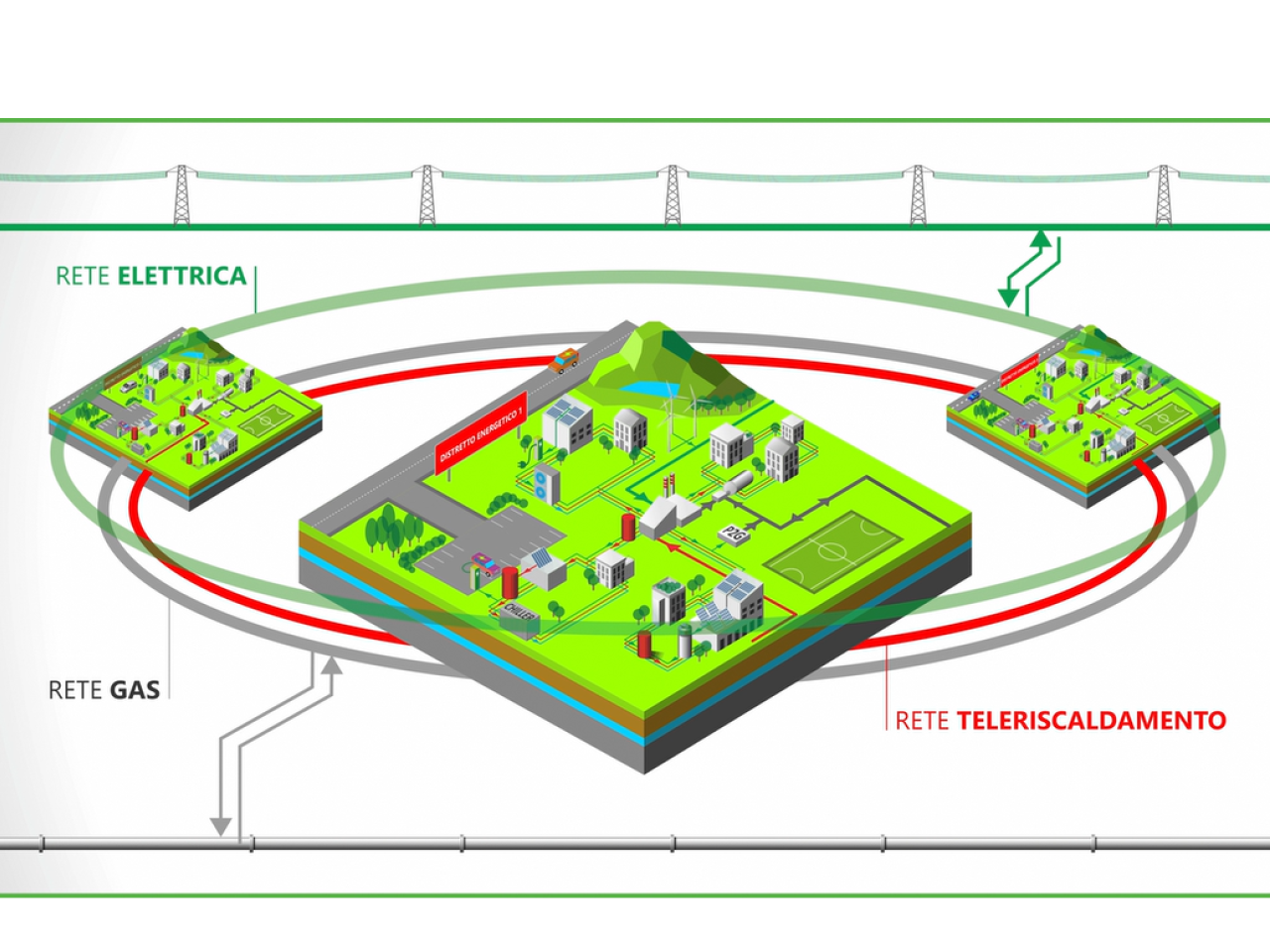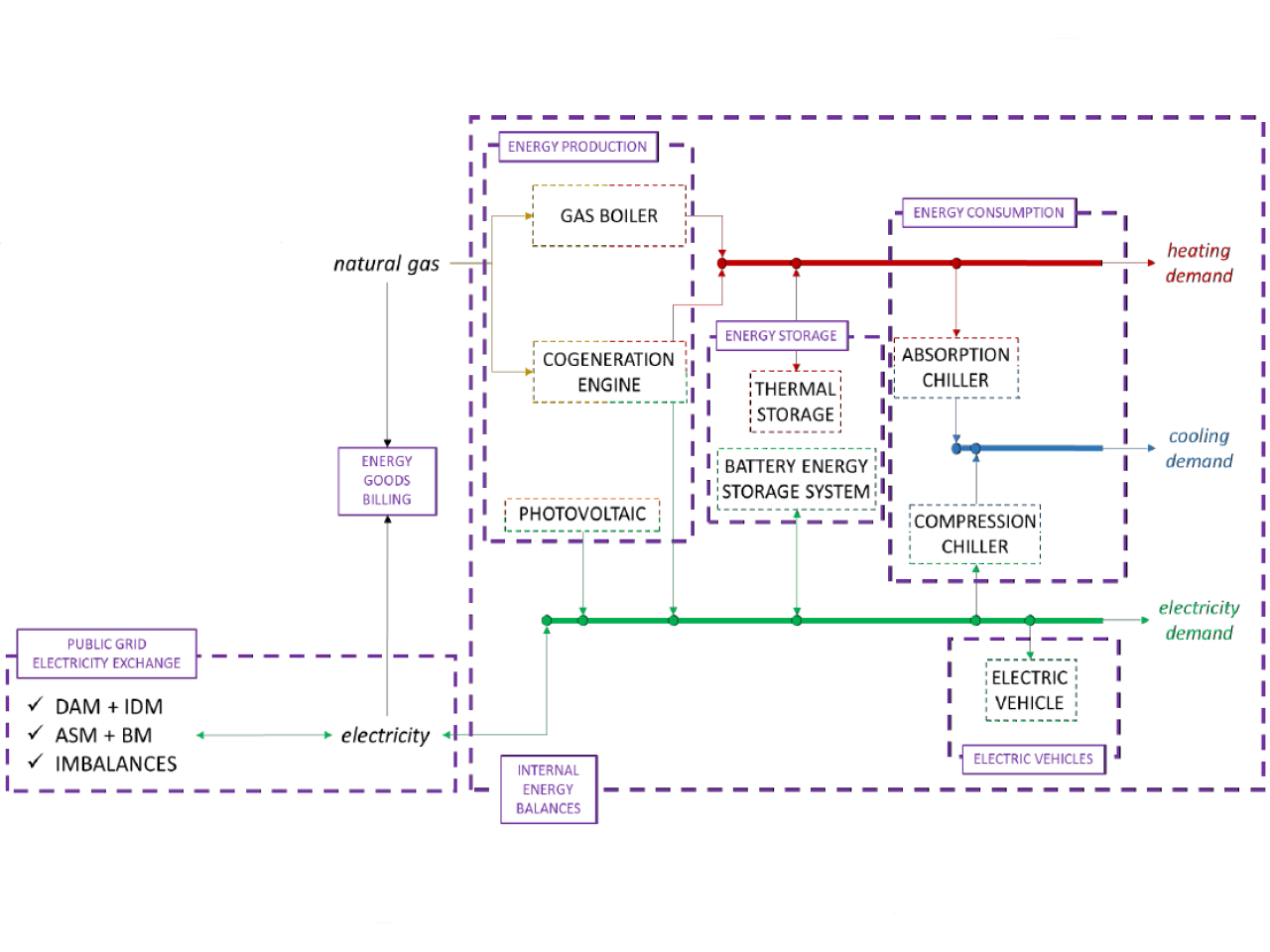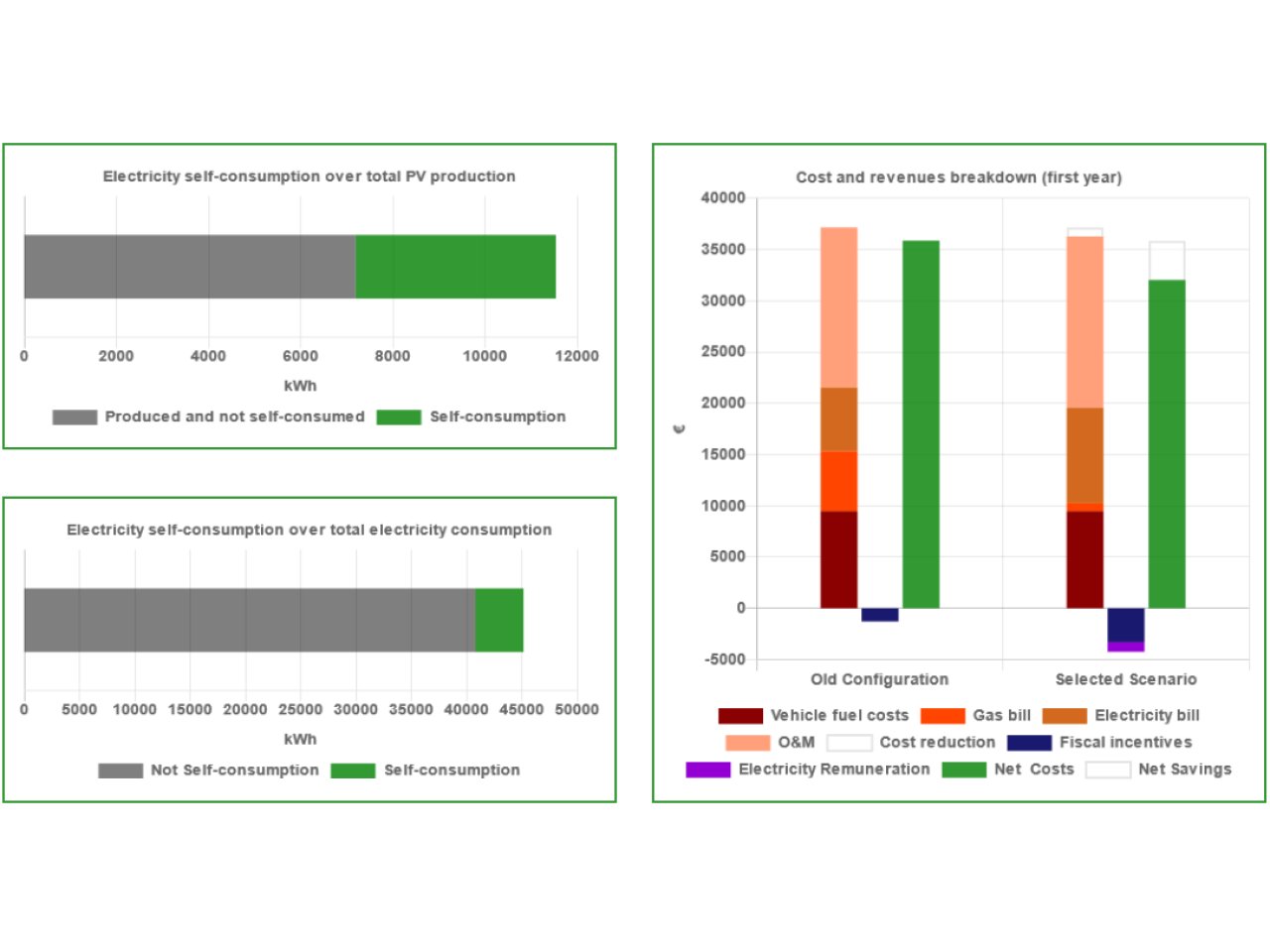Energy systems are undergoing a transition towards new planning and management models in which energy networks (heat, electricity, gas, transports, etc.) will be integrated with each other to maximise possible synergies (Smart Energy Systems).
The benefits expected from the introduction of these new configurations are environment-related (reduction of climate-changing and polluting emissions), as well as economic (lower costs for energy supply, greater stability of service, less overloading of national grids) and social (greater opportunities for citizen participation). Current regulatory and economic models are not suitable for putting this vision into practice.
The ENERGYNIUS project has outlined development models and management strategies that enable this new paradigm to be implemented: designing and managing integrated energy systems in an efficient and sustainable manner, with proactive participation of individual and aggregated users.
 ENERGYNIUS - Energy Networks Integration for Urban Systems
ENERGYNIUS - Energy Networks Integration for Urban Systems
The main objective of the project is to explore and promote new planning and management strategies for urban energy systems that are able to minimise the use of fossil fuels.
If, on the one hand, the spread of intermittent renewable sources (solar and wind, in primis) allows the reduction of GHG emissions and pollutants, on the other hand it puts a strain on the stability and reliability of energy distribution systems.
To efficiently meet this challenge, energy networks and services (gas, heat, electricity, transports) must be designed and managed in an integrated manner: the intelligent use of energy conversion and storage systems can trigger favourable synergies. Distributed (or diffuse) generation is also allowing some consumers to be producers at the same time (Prosumers) and promoting phenomena of aggregation of the two (Energy Community and Energy Districts): new players in the energy markets.
To put this integration process into practice, it is essential to develop:
(i) mathematical models for real-time simulation of the behaviour of energy production, storage and distribution systems;
(ii) software tools for optimising exchange profiles between internal and external distribution networks;
(iii) hardware tools for plant control.
Development models for the access of Prosumers and Energy Districts to markets: promotion of the clustering of users in energy communities and the proactive contribution of energy districts to the functioning of regional and national energy networks.
Mathematical models and software tools for the real-time simulation of integrated multi-energy networks: development of the district digital twin for the virtualisation of the components of an energy district.
Software tools for the optimised management and diagnosis of energy districts: optimised management of bi-directional exchanges within the district (electricity grid and heat network, electric vehicle recharging, etc.) and between the district and the external network.
Design of a hardware component for controlling the energy systems of a district: integration of real-time data collected by local monitoring systems with forecasts provided by predictive models and optimal control of the systems serving the utilities.
Validation in a relevant environment of software and hardware components and guidelines for the interoperability of energy networks (University of Parma, Politecnico di Milano).
Application of the multi-energy cluster management tool at Campus Leonardo - Politecnico di Milano.
Evaluation of the benefits that can be achieved thanks to the new opportunities offered by the dispatching services markets: proposed Pay-Back Times are reduced by up to 40-60% (faster achievement of decarbonisation of energy consumption).
Application of the multi-energy district management tool to AKSE's headquarter.
Identification of possible improvements in the management implemented to meet energy demands.
 PoliMi case study - The symbiotic network-district relationship
PoliMi case study - The symbiotic network-district relationship
Virtual laboratory
A tool that, for a typical medium-sized apartment block located in Emilia-Romagna region, makes it possible to
- compare different levels of electrification of consumption (e.g. through the installation of photovoltaic modules, heat pumps, batteries and the use of electric vehicles)
- assess the benefits of collective self-consumption on cash flows and fossil CO2 emissions, compared to the baseline situation where users do not constitute the community.
An optimisation tool was developed to assess the economic-environmental impacts of electrification of consumption and aggregation of users in collective self-consumption configurations.
The application to a case study (apartment block of nine users) made it possible to quantify the benefits of using the electric vector to produce and store heat or to recharge vehicles in the presence of self-produced energy sharing.
The results show how the integration of electric and thermal vector at the condominium level offers economic and environmental advantages. The use of electro-chemical storage (electric vehicles and condominium batteries) provides benefits over longer periods of time, which, however, increase over the years.
Research partners
LEAP
CIDEA (Università di Parma)
CIRI FRAME (Università di Bologna)
MECHLAV
ENEA CROSS-TEC
Industrial partners
SIRAM S.p.A., OPTIT S.r.l., AKSE S.r.l., IREN S.p.A., BorgWarner Systems Lugo S.r.l., CPL Concordia Soc. Coop., Antas S.r.l.
The tool could be further developed to adapt to larger case studies characterised by the presence of multiple types of users and energy carriers, realising the Smart Energy Systems paradigm.
It could also be used to study alternative incentive schemes with a view to the optimal integration of energy carriers on a local scale.
 KPIs for the selected scenario in the developed tool for assessing the economic-environmental impacts of electrification consumption
KPIs for the selected scenario in the developed tool for assessing the economic-environmental impacts of electrification consumption

